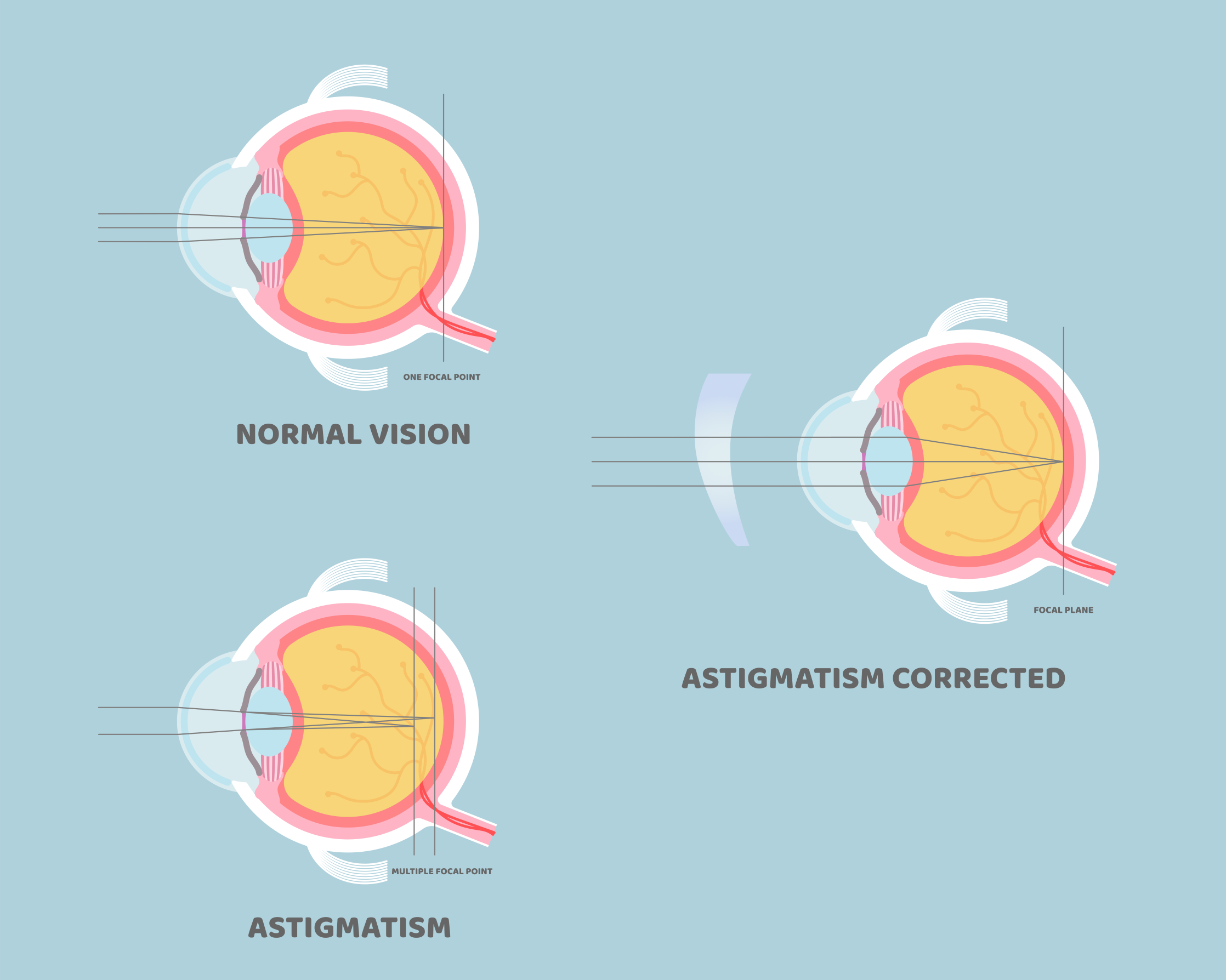 LynbrookOptical
LynbrookOpticalMenu
Astigmatism
Thu Dec 14 2023Clear Vision Ahead: Everything You Need to Know About Astigmatism and How to Fix It
ASTIGMATISM is a common refractive error that impacts a large number of people globally[1]. Despite its prevalence, many people are not familiar with the condition or how it affects their vision. In this article, we'll provide an overview of astigmatism, including its causes, symptoms, and treatment options, as well as tips for preventing and managing the condition.
What is Astigmatism?
Astigmatism is a refractive error that occurs when the shape of the cornea or lens is irregular, causing light to focus unevenly on the retina[2]. This can result in blurred or distorted vision and can make it difficult to see fine details or distinguish between similar objects.
Astigmatism can occur alone or in combination with other refractive errors, such as nearsightedness (myopia) or farsightedness (hyperopia)[3]. It can affect people of all ages and can be present from birth or develop later in life[4].

What Causes Astigmatism?
Astigmatism is often the result of an irregularly shaped cornea or lens. The cornea is the clear outer layer of the eye, while the lens is located behind the pupil and helps to focus light onto the retina. When the cornea or lens is curved more in one direction than the other, it can cause light to focus unevenly on the retina, leading to astigmatism.
Certain factors can increase the risk of developing astigmatism, including genetics, eye injuries or surgeries, and certain medical conditions such as keratoconus or pellucid marginal degeneration.
What Happens When You Have Astigmatism?
Astigmatism can cause a range of symptoms, depending on the severity of the condition. A few typical indications are:
- Blurred or distorted vision, particularly when looking far away.
- Difficulty seeing fine details or distinguishing between similar objects
- Eye strain or fatigue
- Headaches or migraines, especially after reading or other activities that require close focus
- Squinting or tilting the head to see more clearly
In some cases, astigmatism may not cause any noticeable symptoms, especially if the condition is mild.
How Is Astigmatism Diagnosed?
If you are experiencing any of the symptoms listed above, or if you have a family history of astigmatism or other vision problems, it's important to schedule an eye test with your optometrist. During the exam, your eye doctor will perform a series of tests to check your visual acuity and detect any refractive errors, including astigmatism.
Some common tests used to diagnose astigmatism include:
- Visual acuity test: This test measures how well you can see at a distance and up close, using an eye chart and various lenses.
- Refraction test: This test measures the exact prescription you need to correct your vision, using a phoropter or trial frame.
- Keratometry: This test measures the curvature of the cornea, using a specialized instrument called a keratometer.
- Corneal topography: This test creates a detailed map of the cornea, using computerized imaging technology.
Once your eye doctor has diagnosed astigmatism, they will work with you to develop a treatment plan that best meets your needs.

How Do You Fix Astigmatism?
If you have been diagnosed with astigmatism, don't worry because there are several treatment options available for astigmatism, depending on the severity of the condition and your personal preferences. Some common treatment options include:
- Eyeglasses or contact lenses
One of the most common ways to treat astigmatism is by wearing prescription glasses or contact lenses. These lenses are specially designed to help bend light rays to compensate for the uneven curve of your cornea, resulting in clearer and sharper vision.
If you prefer contact lenses, there are various types available, including toric lenses, which are specially made to fit the shape of your cornea. Soft disposable lenses are also available, which are more comfortable to wear than rigid gas-permeable lenses.
- Refractive surgery
Another option is refractive surgery, which is a surgical procedure that corrects the shape of the cornea. The most common types of refractive surgery for astigmatism are LASIK (laser-assisted in situ keratomileusis) and PRK (photorefractive keratectomy). These procedures use a laser to reshape the cornea and correct the uneven curvature, resulting in clearer and sharper vision.
- Orthokeratology
Orthokeratology, also known as ortho-k, is a non-surgical option for correcting astigmatism. This procedure involves wearing special rigid gas-permeable contact lenses overnight, which gently reshape the cornea while you sleep. The effects are temporary, so you need to wear the lenses every night to maintain the correction.
Conclusion
Astigmatism is a common condition that affects the way light rays enter your eyes, resulting in blurry or distorted vision. It can affect people of all ages, and the symptoms can vary from mild to severe. If you experience any symptoms of astigmatism, such as blurry or distorted vision, headache, or eye strain, it is essential to see an eye doctor for a comprehensive eye test.
The good news is that astigmatism is treatable, and there are several options available, including eyeglasses, contact lenses, refractive surgery, and orthokeratology. The treatment that's best for you depends on the severity of your condition, your lifestyle, and your personal preferences.
If you're experiencing blurry or distorted vision, it could be a sign of astigmatism. Don't wait until it's too late. Schedule an appointment with our optometrist online or call us at 03-9702-9118 today to get a bulk billed eye test and start exploring your treatment options. Your eyes are priceless, and they warrant the utmost level of care.





